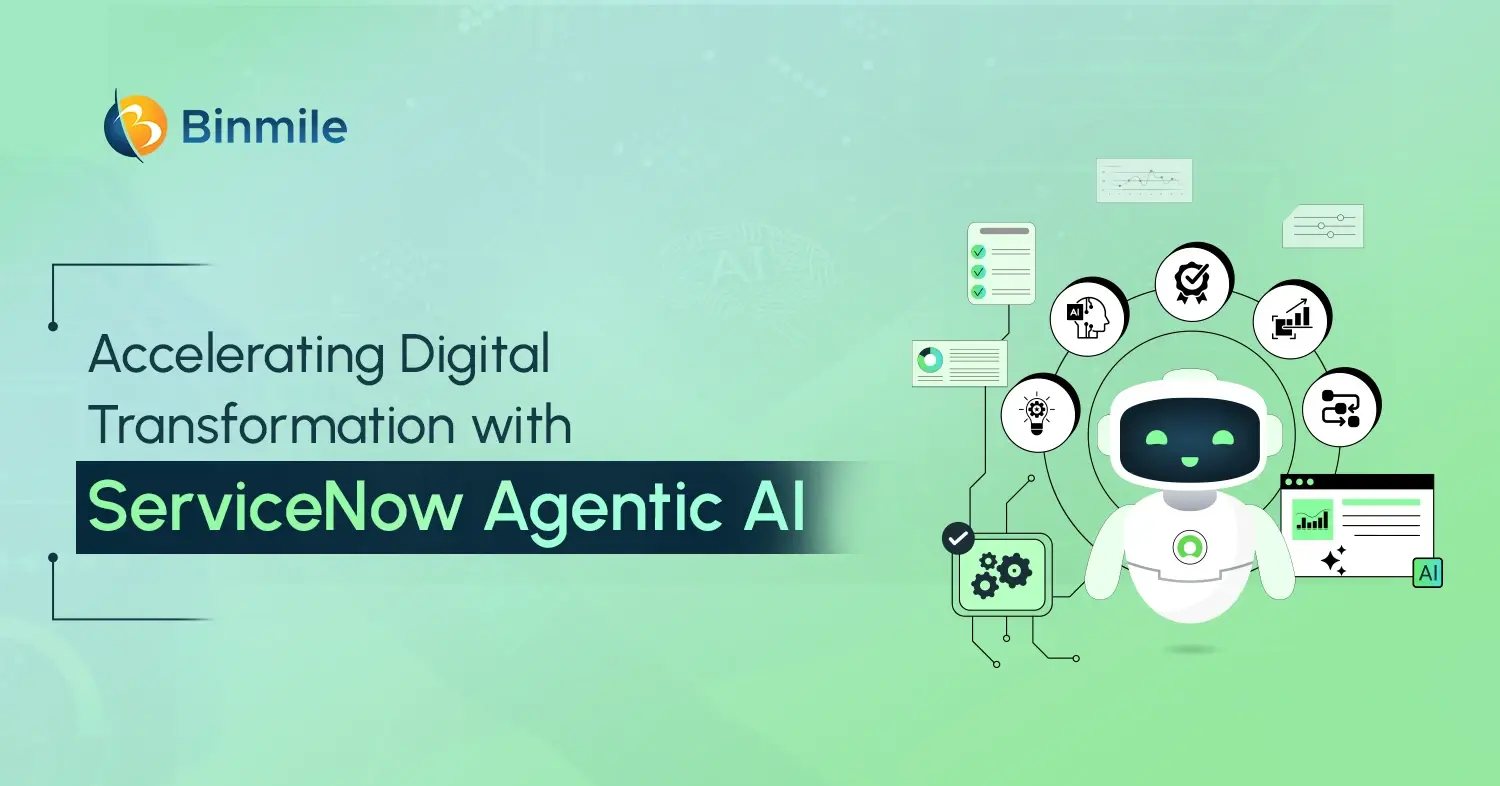Undoubtedly, Artificial intelligence has transformed the way financial services providers offer services and engage with customers. However, AI in finance isn’t stopping at it; it’s also reshaping personal finance management for consumers. The technology is going beyond automating basic tasks, such as categorizing expenses or sending bill reminders. Today, AI in personal finance management also analyzes behavioral patterns, learning user preferences, and offers hyperpersonalized recommendations. As a result, consumers can effortlessly manage their budgeting, investing, or debt management, and even adjust plans dynamically based on AI-driven real-time data insights.
So, let’s understand how, from being a reactive financial tracking system to a proactive and intelligent financial planning tool, artificial intelligence in finance is driving this shift. Additionally, we’ll explore seven impactful ways AI is streamlining everyday money management and transforming how people plan for their financial futures.
What is Artificial Intelligence in Finance?
Artificial intelligence in finance involves leveraging AI technology and its subsets, such as machine learning (ML), to enable financial services providers to improve the efficiency and accuracy of tasks like forecasting, investment management, risk management, fraud detection, customer service, and more. In addition, AI in finance is used to gain a deeper understanding of markets and customers, analyze and learn from digital journeys, and engage in a manner that mimics human intelligence and interactions at scale.
AI in finance examples include AI/ML in fraud detection, sentiment analysis chatbots, and voice banking.
AI vs. Traditional Finance: Why AI is the Future of Personal Finance Management
| Factors | Traditional Finance | AI in Personal Finance |
|---|---|---|
| Decision-Making | Based on static rules, manual input, and historical data | Real-time, adaptive, and predictive based on dynamic user behavior and market trends |
| Personalization | Generalized advice and one-size-fits-all strategies | Hyper-personalized recommendations tailored to individual goals and financial habits |
| Efficiency | Time-consuming processes with limited automation | Instant processing, automation of tasks, and 24/7 accessibility |
| User Engagement | Primarily reactive; requires user initiation and frequent manual updates | Proactive; AI nudges users with timely insights and automated alerts |
| Scalability & Learning | Limited adaptability; improvements rely on manual intervention | Continuously learns and scales with user behavior and new data inputs |
Transformative Role of AI in Finance: Trends, Challenges & Opportunities Ahead
Managing your finances is no longer just about spreadsheets or end-of-month statements. With AI in finance, you get real-time insights, tailored advice, and automated smart moves. Let’s explore in detail how AI is redefining the way we budget, spend, and save, making the entire process less stressful and more strategic.

1. Adaptive Personalized Budgeting
AI-powered apps don’t just set budgets, they evolve with you. These tools analyze your income, spending patterns, and even seasonal expenses to create a dynamic budget that adjusts as your life does. Whether you splurge during the holidays or tighten up mid-month, the system recalibrates without you needing to intervene. It’s budgeting, but more intelligent, simplifying finance management by tracking spending and bills and providing customized insights.
2. Automated Expense Tracking
Utilize these AI-powered Fintech apps for automating services that automatically categorize your transactions as they happen, giving you a clear breakdown of where your money goes without lifting a finger. Over time, these systems become even more precise, learning to distinguish between similar purchases and flagging unusual activity. That means fewer “where did my money go” moments with faster expense reporting and effective cost control.
3. Intelligent Background Savings
AI tools are making saving money less about discipline and more about design. Based on your cash flow, upcoming bills, and past habits, these systems automatically move small amounts into savings when it makes sense without leaving you short. The result? You steadily build a cushion without feeling the pinch, and without needing to decide when or how much to save.
4. Enhanced Credit Monitoring
AI-driven finance tools do more than show you your credit score; they break down why it’s changing and how to improve it. From timely bill reminders to personalized suggestions on credit utilization, they act like digital credit coaches. Some even simulate scenarios, like paying off a card or closing an account, so you can see the impact before you act.
5. Proactive Fraud Detection
AI’s pattern-recognition capabilities, especially ML models for fraud detection, can identify risks before they result in significant losses or substantial harm to you. These intelligent systems can spot anomalies in your spending behavior and can flag suspicious transactions in real time, sometimes before you even notice them yourself. It’s an added layer of protection that doesn’t just react, but predicts and prevents, helping keep your money and identity safer.
6. Goal-Aligned Investment Guidance
You don’t need to be a market expert to start investing. Robo-advisors use AI to understand your financial goals, risk tolerance, and timeline, and then suggest or manage portfolios tailored to you. Many even rebalance investments automatically based on market changes or life events, helping you stay on track without constantly checking in or second-guessing your choices.
7. Strategic Debt Management
Managing debt can become overwhelming quickly, but AI-powered apps and tools simplify the process. They analyze your income, interest rates, due dates, and even behavioral spending triggers to suggest the most efficient repayment strategies. Some go a step further, automatically allocating extra cash toward the highest-interest debt or setting reminders that align with your actual cash flow, not just static due dates.
Upgrade your fintech app with smart investment features—partner with experts to build scalable, AI-driven solutions for better financial outcomes.

How to Integrate AI in Your Finance App: Actionable Guide for Businesses
Whether you’re building from scratch or optimizing an existing FinTech app, you need a solid app development strategy for enhanced user experience and effortless services. Here are 5 steps that will help you integrate AI in a way that adds real, visible value to your users.

Step 1: Strategic Use Case Creation
You must focus on AI applications that solve real-world problems, such as budgeting, fraud detection, or financial forecasting. Focus on the features that improve decisions or reduce friction. The aim is to offer something meaningful, beyond merely integrating whatever trends in AI in the finance industry are available.
Step 2: Process Compliant Financial Data
The significance of data quality in AI cannot be understated, so ensure you have access to well-marked, consent-driven financial data, such as expenditure trends, revenue streams, and transactional records. You must build secure, compliant data pipelines to enable ongoing model performance support without compromising privacy, trust, or violating regulatory guidelines.
Step 3: Select the Right AI & Tech Stack
Apply AI models to real-world use cases with targeted approaches like recommendation engines, anomaly-based fraud detection, and NLP. Build on the right FinTech app tech stack using frameworks like TensorFlow or PyTorch to accelerate development, maintain integrity, and flexibility to integrate with evolving financial APIs and AI capabilities.
Step 4: Seamless AI Experience Integration
Ensure AI operates as a simple background feature that adds utility without necessarily disrupting the flow. Insert actionable insights on budgets, alerts, and recommendations into the workflow to enhance efficiency and effectiveness. However, avoid making your UI too complicated and ensure it offers an intuitive, natural, and precise experience; it should not seem out of place or too experimental.
Step 5: Refine with User Feedback
Consider AI implementation as a possibility and an iterative process. So, release features incrementally, monitor user behavior, and adapt using live data. Use A/B testing to uncover bias or irrelevance, then refine models and interfaces to stay efficient, relevant, and continuously valuable.
Ready to deliver next-gen financial experiences? Hire AI experts to build scalable systems that boost loyalty and performance.

Artificial Intelligence in Finance: Opportunities and Challenges
- Hyper-Personalized Banking: AI tailors financial products based on user behavior and preferences. This deepens engagement and boosts satisfaction.
- AI for Risk Management: ML models assess credit and market risks in real time. They adapt quickly to changing financial environments.
- Generative AI for Fraud Detection: With generative AI in banking, your systems can detect even subtle, evolving fraud patterns. It helps institutions preempt threats with greater accuracy and quicker resolution.
- Conversational Finance Bots: From text-based chatbots to AI voice banking, conversational interfaces are transforming how users interact with financial services.
- AI Governance Tools: Firms now deploy AI to monitor algorithm fairness and compliance. It ensures transparency and trust.

With all these top fintech trends, it’s evident that artificial intelligence in finance will further redefine the way individuals manage their finances and how financial services providers will offer services. However, while AI in personal finance management is reshaping finance for the better, it doesn’t come without challenges. From data privacy, algorithmic bias, and security lapses to lack of transparency, all these can impact user trust and decision quality. Additionally, regulatory compliance and the ethical use of data add further complexity, hindering the rapid adoption of innovative developments in AI. But these aren’t deal-breakers, but design challenges. With the proper and robust measures, transparent systems, and continuous human oversight, AI can enhance financial tools without compromising on clarity, security, control, or user trust.
Also Read: Use Cases of Generative AI in Financial Services
Closing Statement on AI in Finance
As we have seen so far, AI in finance is redefining how individuals and businesses manage, grow, and protect their money. From adaptive budgeting and predictive savings to goal-aligned investing and proactive risk alerts, AI is reshaping financial management into something more innovative, faster, and far more user-centric. However, success doesn’t come from simply integrating AI; it comes from aligning it with real financial goals, clean data, and seamless user experiences. If your business is ready to move from potential to performance, our AI-enabled finance solutions can help. Our developers combine intelligent automation with deep financial insights to help you build tailored, scalable, secure, and impactful AI integration for your business needs.
Reach out for a free consultation and explore how our AI-led development can power your next product, app, or platform from budgeting to investing and beyond.









